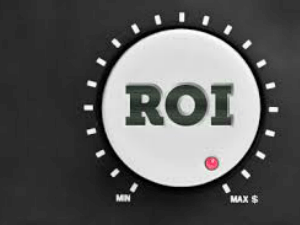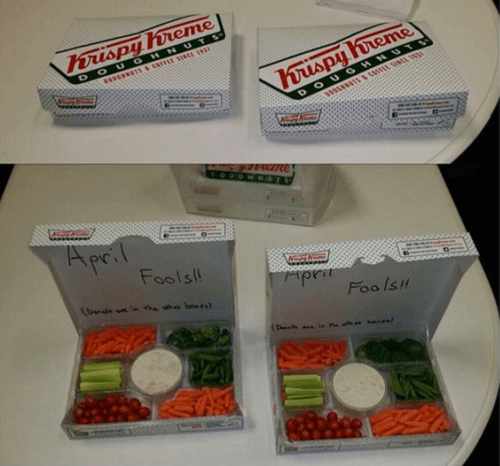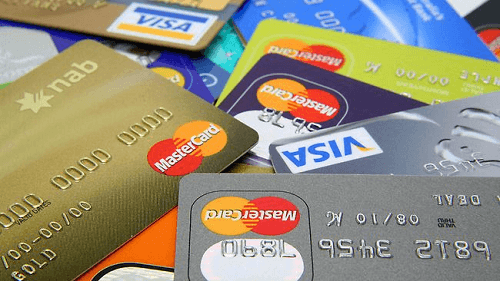Email marketing remains one of the most successful and cost-effective marketing channels. Some say it’s second only to search, and we agree. The cost of sending an email is measured in tiny fractions of a penny while the average return is between $0.06 and $0.07*. The common wisdom is that every $1 spent on email returns $40 in revenue. That’s a 4000% ROI!
Yet there’s a lot that can be done to improve results. Clearly open and click through rates depend a lot on subject lines and offers, but maximizing your return also means maximizing deliverability. Here are 10 tried-and-true steps for optimizing your retail email marketing efforts and achieving the greatest return.
1) Fix your contact data quality issues first
Given the relatively low cost to send email, it’s tempting to ignore the bounce rate and all those undelivered emails. But think again. Every email that’s not delivered produces no return at all – nada, nothing. In our experience, on average, 30 percent of the contact data in our customer’s databases are bad. This is because contact data decays at an average rate of 2 percent per month, and up to 40 percent of all data collected at point of sale is inaccurate. Best practice is to find out which records are inaccurate and, wherever possible, fix them. That way you’ll have higher deliverability rates, likely a better understanding of your customers and prospects, and a greater return. How can you fix broken email addresses? Here are a few ideas:
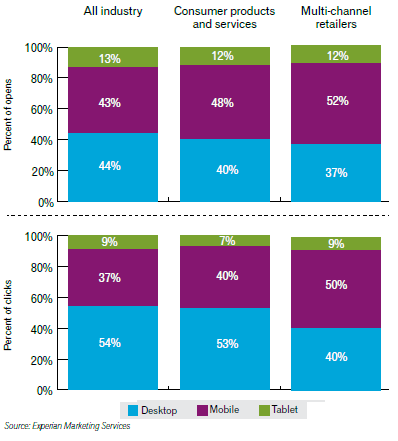
- Trigger an email update on your Ecommerce platform when a bad email address is recognized
- Create an online, direct mail, or PPC program that requires an online response (e.g. a discount coupon delivered via email)
- Text mobile users (who gave permission) and provide a webpage link that offers a promotion and collects their email address (e.g. loyalty program or credit card sign-up)
- Provide reverse phone number lookup and/or type-down capabilities to in-store sales staff to improve collection—flag customers with poor email addresses and fix them.
- Use Experian Data Quality email append services when you have valid name and mailing address information (and opt-in based on the inaccurate email address)
2) Reengage your dormant accounts
We’ve all received those “we want you back” emails, but do they work? The simply answer is “yes, they can.” Of course, it’s more complex than simply asking dormant customers to buy again. The key is to segment customers appropriately and to make offers accordingly. Recognizing that someone hasn’t bought for a while may mean reminding them of your brand promise, their satisfaction, or their previous purchase. Find a reason for them to buy again and they’ll reward you.
3) Personalize
“Dear Michael,” or better still, “Jessica, thanks for shopping with us” in the subject line, are well known and effective personalization techniques yet in today’s data-driven world these approaches only scratch the surface. What else do you know about Michael or Jessica? Are they Millennials as their names suggest? Do they prefer to buy online or in person? Are they high school or college graduates? Which colors/styles do they prefer? Are they married or single? And, of course, what’s their likely disposable income? Segmenting your database according to age, gender, interests, income, prior purchases, etc. allows you to provide much greater levels of personalization and to make offers that will resonate more powerfully.
4) Look for trigger opportunities
The key here is relevance, and most people welcome a reminder and an offer. Birthdays, anniversaries, significant purchases (think house/yacht/pet), holidays, events (yes, back-to-school and starting college are events) are all great reasons to make purchases. Targeted emails based on trigger events do exceptionally well. In particular, make sure that your transactional emails—such as confirmations and receipts—also contain actionable and relevant offers.
5) Leverage your omnichannel capabilities
A Californian friend of mine once told me, “If you’ve got it, flaunt it!” And this is sage advice for omnichannel retailers. Make sure you welcome new customers, regardless of their mode of purchase. Tell them about your brand and about your business. Encourage them to make additional purchases, based on their initial ones with an attractive offer. Tell them about your warranty and support capabilities. Invite them to sign-up for your newsletter or catalog, for in-store events, and for your loyalty or credit programs. The golden rule in retail, “know your customers” is also true in reverse. The more customers know about your business and the products you sell, the more they’ll spend.
6) Use predictive analytics
In today’s highly competitive environment you can’t afford not to use machine learning. Build models with predictive analytics to prioritize purchase follow-up, provide tailored products, offer recommendations, and enable more intelligent interactions. Amazon, who will likely be a $100 billion business this year or next, is growing at ~30 percent per year. They admit to being customer-obsessed and are highly data-driven, known for their “customers who bought X were also interested in Y” recommendations. For omnichannel retailers, tracking customer purchases across channels and making predictive recommendations can enhance in-store, Ecommerce, and catalog sales.
7) Reduce cart abandonment
Cart abandonment is the bane of most retailers. Reducing it is a great way to increase sales, given that customers with goods in a shopping cart have clearly demonstrated interest. However, it’s also hard to do. Emailing customers who create a shopping cart but have not triggered a confirmation is one approach that can help when there’s been no purchase at all. Email may work less well on customers who purchase some items and exit the cart leaving other items still there. Remarketing is an often tried approach in this case, although being overly aggressive can also lead to customer dissatisfaction.
A big challenge is the growing millennial habit of using a mobile-phone-based shopping cart as a shopping or wish list. The shopper may have no intention of purchasing all items in the cart at one time, from that particular retailer, or at all. Yet studies suggest that around two-thirds of cart conversions stem from email promotions. Responding quickly by email with a clear instructions and an attractive and timed offer (e.g. free shipping, expedited shipping at regular shipping price, limited time discount) can overcome the inertia of first time shoppers and encourage repeat buyers to purchase more from their wish lists.
8) Make mobile frictionless
Whether the device in question is a shopper’s phone or a store assistant’s mobile tablet, it’s imperative to make the experience as frictionless as possible. Responsive design goes without saying, but making it as simple as possible for the user to enter accurate contact information is imperative. For the shopper, who may be standing in line at the checkout (and not necessarily yours), having minimal transaction time is imperative; similarly for the store clerk trying to assist the customer in a timely fashion.
Techniques such as “type-down,” where users start typing and the device offers suggestions based on known information in your database, work extremely well for existing customers or when collecting mailing addresses. They significantly reduce the number of keystrokes required and provide an opportunity to validate the contact details while the customer is engaged. Follow up with a personalized email response as quickly as possible to boost satisfaction/engagement.
9) Choice and channels
Of course, anytime you send an email, apart from ensuring deliverability, the most important component is the subject line. No matter how valuable the offer, if the email remains unopened no purchase or engagement will occur. Our 2015 quarterly benchmark report* highlights the value of giving customers a choice and using the word “choice” in the subject line. Subject line preferences do change though, so it pays to test before you action a campaign. Just make sure your contact data is accurate first. Poor data will likely skew your results.
Above average results can also be achieved when it’s possible to use more than one communications channel. For example, where you have permission to both text and email customers. Texting is more immediate and can be used together with location information to alert customers that there is promotion available in their email inbox.
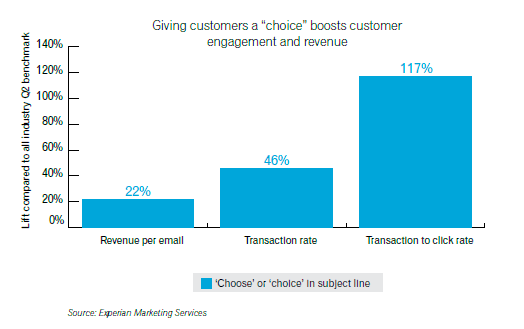
10) Tie it all together
While email-only campaigns can be very effective, maximizing your return means leveraging all aspects of your omnichannel capabilities and making them (appear at least) as seamless as possible. Most important is keeping track of any inventory you are promoting. Not being able to ship, or not being able to ship to each individual customer in a timely fashion, will reduce your ROI. Beyond that, integrating marketing channel capabilities, such as creating email campaign specific web pages, is also important. Mobile users should be able to display coupons on their phones and use them at the POS without printing them. And so on. Retail customers have fully embraced the omnichannel concept. It’s important that retailers meet and exceed their expectations.
For more ideas about how to better meet and exceed your customers’ expectations and improve customer satisfaction, read our white paper “Using Customer Data to Exceed Expectations.” Read about what a data-driven customer experience actually entails and how to prepare for consumers’ in-the-moment moments, among other valuable tips.
References:
* Quarterly email benchmark report (2015 Q4) – An Experian Marketing Services Benchmark Report




